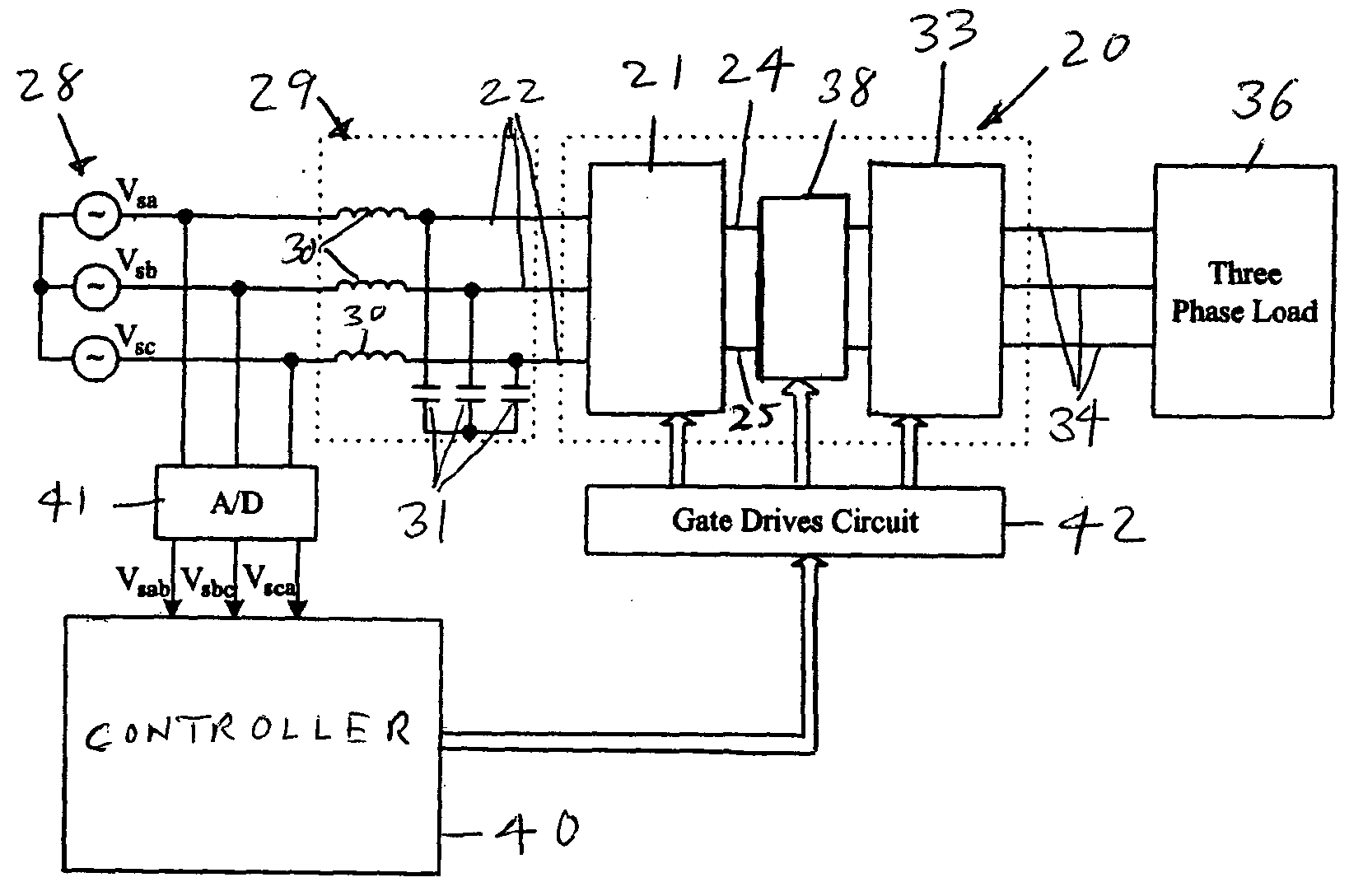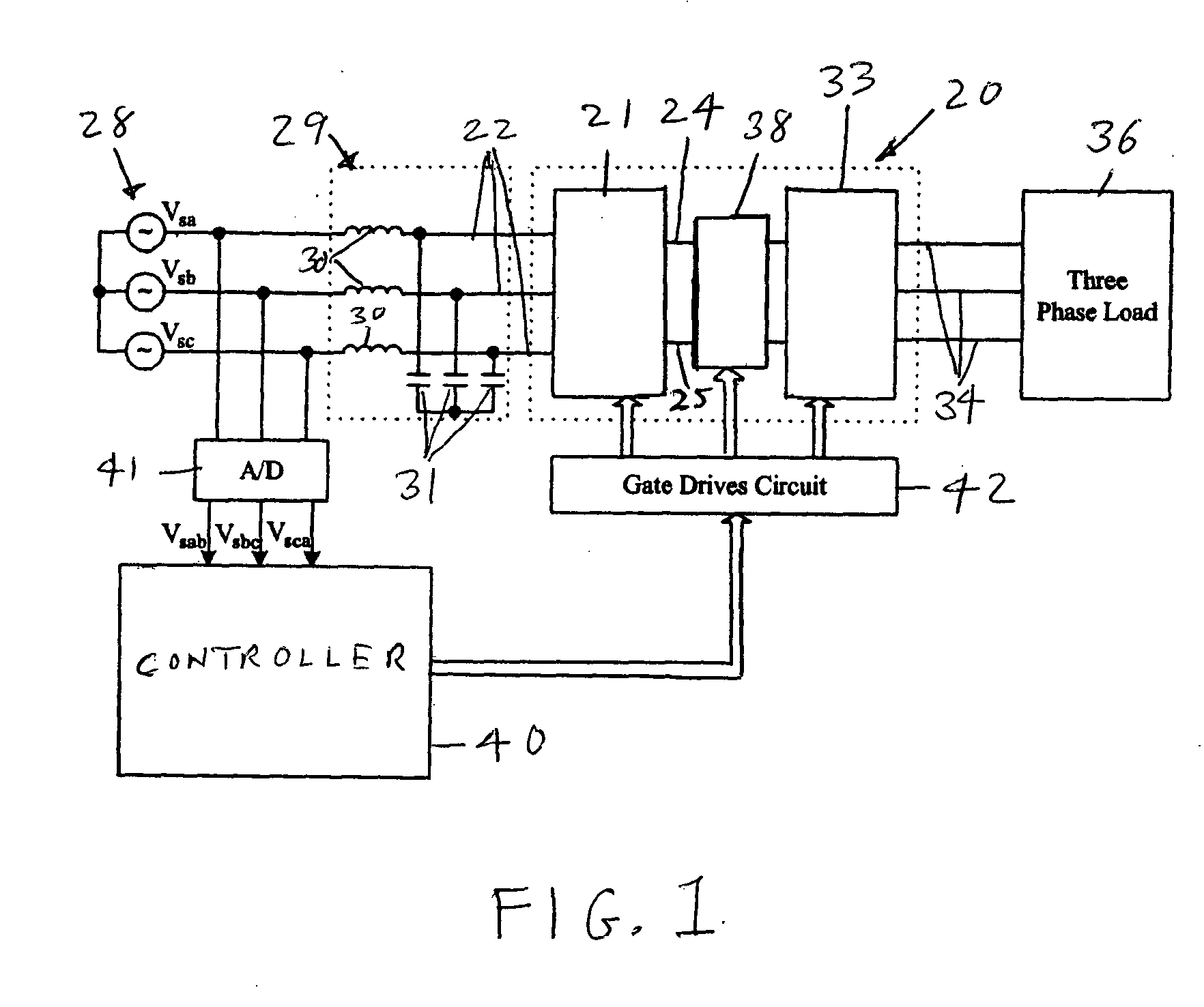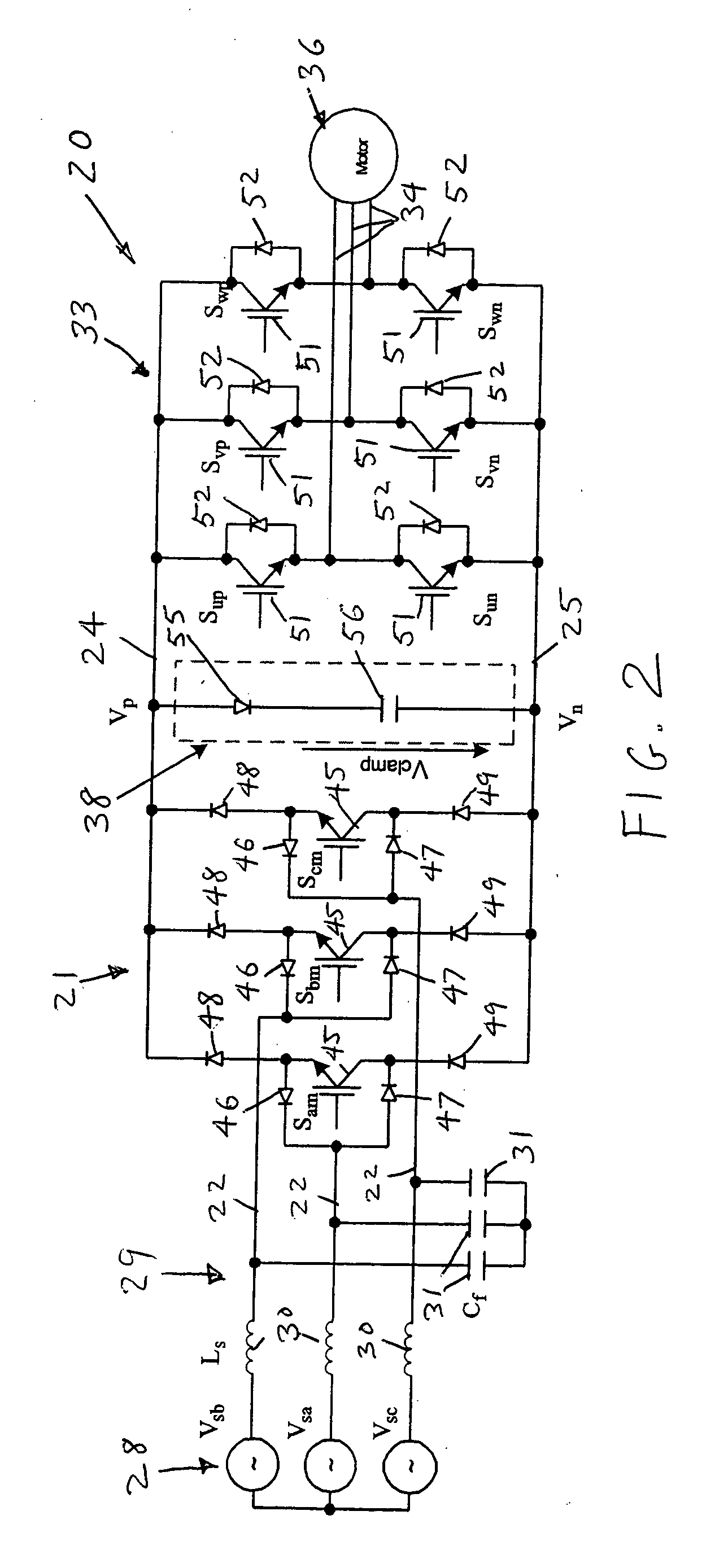Dual bridge matrix converter
a converter and matrix technology, applied in the field of ac to ac electrical power converters, can solve the problems of insufficient adoption of matrix converters, inability to achieve the effect of reducing or eliminating high voltage spikes, low rated, and low cos
- Summary
- Abstract
- Description
- Claims
- Application Information
AI Technical Summary
Benefits of technology
Problems solved by technology
Method used
Image
Examples
Embodiment Construction
[0020] With reference to the drawings, a dual bridge matrix converter with a DC link clamp in accordance with the invention is shown in schematic form generally at 20 in FIG. 1. The converter 20 includes an input or line-side converter 21 which receives AC input power on input lines 22 (three-phase lines shown for illustration). The line-side converter is connected across and provides unidirectional power to a DC link composed of a high DC link line 24 and a low DC link line 25. The line-side converter 21 may be any of various circuit topologies which may be used without a DC link energy storage capacitor, for example, 18, 15, 12 and 9 switch topologies. The AC power from an AC power system 28 is preferably filtered by an input filter 29 which may be comprised of series inductors 30 and parallel connected capacitors 31. The dual bridge matrix converter 20 also includes an output or load-side converter 33 which is connected across the DC link lines 24 and 25 to receive power therefro...
PUM
 Login to View More
Login to View More Abstract
Description
Claims
Application Information
 Login to View More
Login to View More - R&D
- Intellectual Property
- Life Sciences
- Materials
- Tech Scout
- Unparalleled Data Quality
- Higher Quality Content
- 60% Fewer Hallucinations
Browse by: Latest US Patents, China's latest patents, Technical Efficacy Thesaurus, Application Domain, Technology Topic, Popular Technical Reports.
© 2025 PatSnap. All rights reserved.Legal|Privacy policy|Modern Slavery Act Transparency Statement|Sitemap|About US| Contact US: help@patsnap.com



